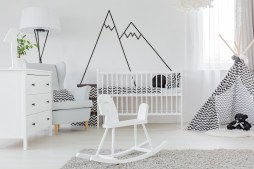The Essential Do’s and Don’ts for Setting Up Your Home Theater System
Setting up a home theater system can be an exciting endeavor. It allows you to bring the ultimate cinematic experience right into your living room. However, to ensure that you get the best out of your home theater system, it’s important to follow some essential do’s and don’ts. In this article, we will explore the key points you should consider while setting up your home theater system.
The Do’s of Setting Up Your Home Theater System
Do Plan Your Room Layout: Before diving into setting up your home theater system, take some time to plan the layout of your room. Consider the size and shape of the space, as well as any potential obstacles or furniture that may affect sound quality or viewing angles. Planning will help you optimize your setup for maximum enjoyment.

Do Invest in Quality Speakers: Speakers are one of the most critical components of a home theater system. Invest in high-quality speakers that are capable of delivering immersive surround sound. Consider a combination of floor-standing speakers, bookshelf speakers, and a center channel speaker for crystal-clear dialogues.
Do Optimize Speaker Placement: Proper speaker placement is crucial for achieving optimal sound quality in your home theater system. Follow guidelines provided by manufacturers or consult with professionals to position speakers at appropriate heights and angles for an immersive audio experience.
Do Calibrate Your Audio System: Calibration is often overlooked but is essential in achieving accurate sound reproduction from your audio system. Use an audio calibration tool or hire a professional to ensure that your speakers are correctly balanced and calibrated with accurate levels.
The Don’ts of Setting Up Your Home Theater System
Don’t Neglect Acoustic Treatment: Acoustic treatment plays a significant role in enhancing the audio experience within your home theater room by reducing echo and improving overall sound quality. Avoid neglecting this aspect and consider adding sound-absorbing panels or bass traps to minimize unwanted reflections.
Don’t Overlook Proper Cable Management: Messy cables can not only be an eyesore but also cause interference and affect the performance of your home theater system. Take the time to organize and conceal cables using cable management solutions, such as cable raceways or wire ties.
Don’t Forget About Lighting Control: Lighting control is often overlooked but can greatly enhance your home theater experience. Install dimmable lights or invest in smart lighting solutions that allow you to create a cinema-like ambiance by adjusting the lighting levels according to your preference.
Don’t Skimp on Power Protection: Power surges and voltage fluctuations can damage your expensive home theater equipment. Invest in a good-quality surge protector or power conditioner to safeguard your system from potential electrical issues and ensure a longer lifespan for your devices.
Additional Tips for Setting Up Your Home Theater System
Consider Room Acoustics: If possible, choose a room with good acoustics or consider acoustic treatments like diffusers and absorbers for improved sound quality.
Optimize Viewing Distance and Angle: Ensure that your seating arrangement allows for comfortable viewing distance and angle, typically around 1.5-2 times the diagonal screen size away from the screen.
Use High-Quality Video Cables: Invest in high-quality HDMI cables for optimal video transmission between your source devices (e.g., Blu-ray player, gaming console) and display (e.g., TV, projector).
Experiment with Speaker Placement: While following general guidelines for speaker placement is essential, don’t be afraid to experiment with slight adjustments to find what sounds best in your specific room setup.
Conclusion
By adhering to these do’s and don’ts while setting up your home theater system, you’ll be well on your way to creating an immersive cinematic experience in the comfort of your own home. Remember to plan your room layout, invest in quality speakers, optimize speaker placement, and calibrate your audio system for optimal sound. Additionally, don’t neglect acoustic treatment, proper cable management, lighting control, and power protection. With these tips in mind, you can enjoy a truly remarkable home theater experience for years to come.
This text was generated using a large language model, and select text has been reviewed and moderated for purposes such as readability.





